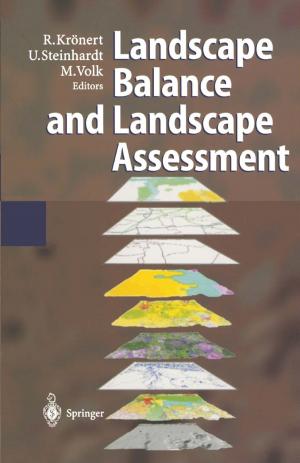Electricity supply for irrigation
Agricultural policies and farm level economics
Nonfiction, Science & Nature, Nature, Environment, Ecology| Author: | Christian Kimmich | ISBN: | 9783867418409 |
| Publisher: | Europäischer Hochschulverlag | Publication: | January 11, 2013 |
| Imprint: | Language: | English |
| Author: | Christian Kimmich |
| ISBN: | 9783867418409 |
| Publisher: | Europäischer Hochschulverlag |
| Publication: | January 11, 2013 |
| Imprint: | |
| Language: | English |
This report focuses on the policies of electricity provision for irrigation and the cost of groundwater-based irrigation. The empirical findings indicate that electricity regulation is unlikely to fulfil the expectations of an allocation-efficient tariff structure in the given political situation, leading to regulatory capture. The report’s chronological approach reveals development paths that are also present in the current action situations. The findings suggest that the involved properties of transactions inherent in the choices available to each actor are constitutive for understanding the unfolding of each potential and the realised development path. The economic conditions of dry-land agriculture and the costs of food provision render a shift towards a cost-based tariff setting unlikely. The analysis at the level of electricity distribution and agricultural production systems indicates that although marginal costs of electricity supply are inexistent, the costs for the consequences of poor infrastructure incur heavy burdens on agricultural enterprises. The costs of electricity would exceed those for each of the other input factors of production. The absence of marginal costs has led to highly inefficient groundwater irrigation. Fortunately, incentives in agriculture for higher power quality are given, resulting from the high costs of pump set burnouts through voltage fluctuations. This incentive can be combined with energy efficiency measures. Effective measures are most feasible at the level of the electricity sub-station, isolating an agricultural electricity feeder and the connected distribution transformers.
This report focuses on the policies of electricity provision for irrigation and the cost of groundwater-based irrigation. The empirical findings indicate that electricity regulation is unlikely to fulfil the expectations of an allocation-efficient tariff structure in the given political situation, leading to regulatory capture. The report’s chronological approach reveals development paths that are also present in the current action situations. The findings suggest that the involved properties of transactions inherent in the choices available to each actor are constitutive for understanding the unfolding of each potential and the realised development path. The economic conditions of dry-land agriculture and the costs of food provision render a shift towards a cost-based tariff setting unlikely. The analysis at the level of electricity distribution and agricultural production systems indicates that although marginal costs of electricity supply are inexistent, the costs for the consequences of poor infrastructure incur heavy burdens on agricultural enterprises. The costs of electricity would exceed those for each of the other input factors of production. The absence of marginal costs has led to highly inefficient groundwater irrigation. Fortunately, incentives in agriculture for higher power quality are given, resulting from the high costs of pump set burnouts through voltage fluctuations. This incentive can be combined with energy efficiency measures. Effective measures are most feasible at the level of the electricity sub-station, isolating an agricultural electricity feeder and the connected distribution transformers.















